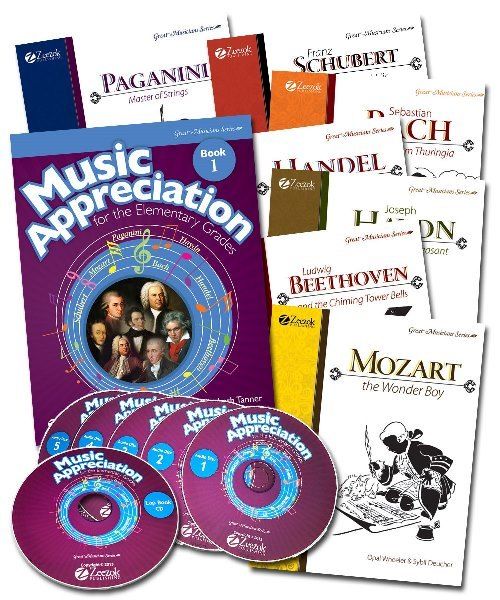My family is moving toward a Charlotte Mason homeschool, and I am learning so much along the way. I hope to share some of what I've been learning with you this week as I take part in the School House Review Crew March Blog Hop - 5 Days of Tips for Homeschool Parents. I'll be sharing on the following topics:
Day 1: The Early Years
Day 2: Multiple Ages
Day 3: Enrichment Studies
Preschool and Kindergarten are what Charlotte Mason called "The Early Years". The early years are very important to a child's future education. However, Mrs. Mason did not encourage formal lessons at this age. In fact, she thought it best for a child to be at least 6 or 7 years old before he started formal school lessons, and even then, that they be kept short and interesting.
So what exactly do the early years look like? Shouldn't children be learning to read and write? Should a child be allowed to run around in total freedom? I'm going to talk about five aspects of a Charlotte Mason education that should be introduced {and expanded upon} in the early years.
Handicrafts and Skills
Handicrafts are different from arts and crafts. While learning to cut and paste are very important skills to learn, paper crafts aren't "handicrafts" as defined by Charlotte Mason. A handicraft is a skill learned that produces something useful. {I have a page on my blog listing some of the handicrafts we have done, if you are interested.}
A few examples would be:
- lacing beads and cards
- watercolor painting
- making simple toys
- beginner mosaic crafts
- beginner sewing or embrodiary
- making a bird house {we use tin cans}
- baking cookies or bread
- building with Legos or wooden blocks
- learning hygiene {brushing teeth, washing hair, getting dressed}
- making wind chimes
- making Christmas ornaments
- play-dough and modeling clay
There are many more handicrafts that children this age can create and many skills to be learned. We try to do one handicraft a week, but some weeks we do several and some weeks we may not do anything other than watercolor painting.
Nature Study
Nature Study is such a simple thing to incorporate into your daily homeschool. Of course, playing outside can be considered nature study, as many young children are constantly observing insects and frogs, picking flowers and looking at the roots and petals, and asking a myriad of questions. But making a point to do a formal nature study once or twice a week is a simple and important thing you can do in the early years {and really, in all the years!}
A few things you can do for formal nature study would be:
- bird watching
- planting seeds and watching them grow
- observing the clouds and wind
- keeping a weather chart and checking the thermometer
- watching ants or other bugs
- having a picture scavenger hunt {certain plants and bugs to find}
- having a sound-only scavenger hunt {listening for birds, the wind, crickets, and such}
- feeding ducks at a pond
- making nature bracelets {use packing tape, sticky-side up, wrapped around your child's wrist}
Living Books



Reading books is usually a given when you have small children. All of my children have loved to be read to from a young age. Having a nice size supply of living books available for your children to explore is a great idea.
What is a "living book"? I took this definition from
Simply Charlotte Mason:
Living books are usually written by one person who has a passion for the subject and writes in conversational or narrative style. The books pull you into the subject and involve your emotions, so it’s easy to remember the events and facts. Living books make the subject “come alive.” They can be contrasted to dry writing, like what is found in most encyclopedias or textbooks, which basically lists informational facts in summary form. You might be surprised to find that living books are available for most school subjects — even math, geography, and science!
There are many living books for the early years that your child will enjoy, and he will learn through simply reading a book to him! A few of our favorite living books series for the preschool and kindergarten ages are:
You don't have to do any fancy activities or add anything to rich literature. Simply read and let your child soak in the knowledge.
Finger Plays, Rhymes and Songs
I'm not sure if Charlotte Mason actually advocated for this, but I found it a gentle and effective way to teach your younger children. We use songs to learn the days of the week, months of the year, skip counting, and Bible stories. We use finger plays to learn the days of creation and counting. We use rhymes to learn, well, rhyming words! You can use songs to teach scripture memorization or poetry memorization, states and capitals, and animals and their sounds.
Here is a list of some great fingerplays and rhymes you can do with your children. Besides being educational, they are just fun!
Hands-On Pre-Reading, Pre-Writing and Math
This is not necessary for the early years, but some parents really want their preschool and kindergarten children to learn how to read and how to add and subtract. I do introduce and use many math and pre-reading and pre-writing manipulatives and toys at this age, but I don't do "formal" lessons until around mid-Kindergarten {and even then, they are short - 10 minutes each}.
Some great items to have would be:
Some activities that can be done at this age are:
- word building with letter tiles. Just write a word on an index card and allow the child to build the word with the letter tiles and practice sounding them out. You can work on word families {cat, bat, mat, rat} or words from a book you have been reading.
- letter building with playdough, craft sticks, or pipe cleaners.
- learning to add and subtract with dice. Or Legos. Or beans. Or counting bears. Just make it a game, and your child will love it!
- playing concentration with alphabet flash cards. Use a few letters at time, preferably some the child is learning.
- writing letters in shaving cream, whipped cream, or a salt try.
I hope that you understand the main point of this post:
The early years should be a gentle introduction into learning. Don't push worksheets and reading lessons on your young child. They will learn all they need to learn and more by the activities listed above. Enjoy your child. Read books. Play outside. Read more books. Play outside some more.
I am actually in the process of writing a "The Early Years: Preschool Guide" curriculum guide. It is a 5-day, weekly schedule with nature study, reading, alphabet and math fun, and Bible lessons. I'm hoping to have it done early May, so I can use it with my almost-4 year old, Titus.
Come back tomorrow for the next post in this series: Charlotte Mason Homeschooling - Multiple Ages.
Visit some of the other participating Crew Members for their Tips for Homeschool Parents.
















































